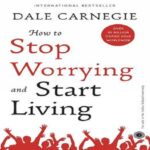Book Review: How to Stop Worrying and Start Living by Dale Carnegie

Dale Carnegie’s How to Stop Worrying and Start Living is not just a self-help manual; it is a window into the intricate maze of the human mind, where fears, anxieties, and sleepless nights roam freely, preying on our peace. This book offers not just practical advice, but a subtle invitation to unravel the mysteries of the human psyche.
What is most intriguing is the profound simplicity of Carnegie’s insights. He doesn’t promise grand, sweeping revelations or instant life transformations. Instead, he shines a light on small, seemingly insignificant habits and attitudes that quietly erode our well-being. One of the key principles he explores is “living in day-tight compartments,” a concept that sounds almost cryptic at first, but gradually reveals itself as a powerful tool to reclaim control over our racing minds. Carnegie presents it with a calm sense of urgency—as though he knows something about life that we don’t, yet.
The charm of this book lies in its real-world examples, taken from people who seem like ghosts from a different era, yet their struggles with worry feel eerily modern. You are left wondering if the battles they fought—facing overwhelming stress, dealing with failures, or worrying about finances—is ever really that different from what we face today. It’s as if the human experience with worry is a universal puzzle, and Carnegie offers timeless pieces to help us fit it all together.
Each chapter is like a breadcrumb in the mysterious journey towards serenity. Carnegie introduces the reader to methods of problem-solving and emotional management that feel almost too simple to be true. But therein lies the enigma: these uncomplicated techniques often work when nothing else does. From banishing boredom to handling criticism, the book’s lessons leave you questioning how such common-sense approaches have eluded you for so long.
Carnegie’s tone is warm, almost conspiratorial, as if he has guiding you through a labyrinth he has mastered. Yet, beneath the accessible writing, there is a deeper undercurrent of wisdom that challenges readers to confront their own emotional landscapes.
Ultimately, How to Stop Worrying and Start Living doesn’t just show us how to quell our worries—it dares us to consider whether we have been living in their shadow for far too long. It is a book that leaves you pondering long after you have put it down, making you question the unseen forces that shape your thoughts and habits.






